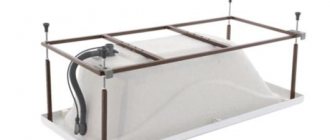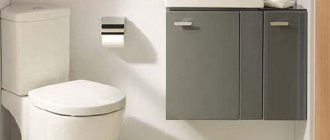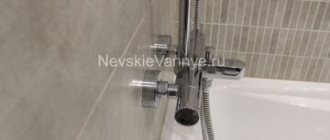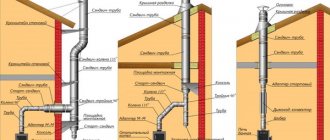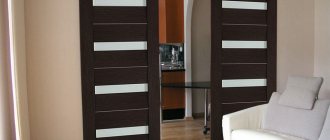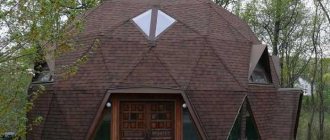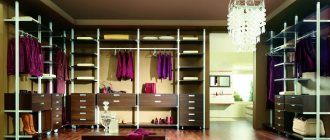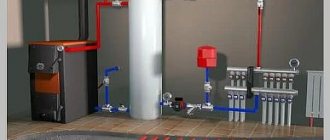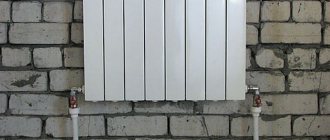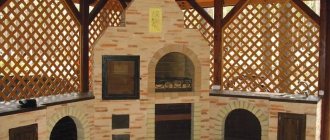The bathroom is one of the most frequently visited rooms in an apartment or house. When purchasing a shower stall for your bathroom, it is recommended to take into account the area of the bathroom and also take into account its design. Hence the choice of modification, shape, size, functionality, as well as the type of opening of the shower doors.
The shape of the cabin directly depends on the pallet. They come in round, semicircular, square, rectangular and pentagonal shapes. The height of the threshold and the depth of the tray deserve special attention.
As for modifications of shower cabins, there are several of them:The quality and cost are affected by the material used to make the pallets. They are usually made from steel, acrylic or composite materials.
- simple;
- multifunctional;
- with steam generator;
- hydroboxes.
Semicircular cabins are ideal for small spaces. They take up minimal space, saving space and making various arrangements possible in the room. You can choose cabins with double or sliding doors with convenient handles. For installation in a larger bathroom, it is preferable to choose square cabins with more space for bathing.
They allow you to create an elegant bathroom style using the available space for a bathtub or Jacuzzi. You can purchase a simple cabin or one with hydromassage. Changing the nozzles in such a shower allows you to enjoy needle-shaped or pulsating streams of water, affecting the skin thermally and mechanically at the same time.
Choosing a shower cabin, attention to detail. When choosing a cabin, it is recommended to pay attention not only to the elegant profile of the product, but also to pay attention to the details and their finishing. It is the handles, hinges and hangers that determine the functionality of the cabin. Parts made from high-quality materials will ensure comfortable use and stable service of the shower cabin.
When is it necessary to install a frame under the bathtub?
Standard bath frames.
The structure consists of several vertical supports with 2-3 horizontal strappings. Industrial production models are designed for statistical averages, taking into account human weight and the volume of liquid in the tank.
Some builders make the mistake of installing bathtubs too low. This prevents normal drainage of water. In such cases, due to the frame, the container rises to the required height.
The area of standard legs is 10 cm². Some people seek to create an additional supporting surface to stabilize the bathtub. For these purposes, a factory frame kit or a structure made independently is suitable.
For bathtubs of a non-standard configuration, the support not only serves as a means of protection against tipping, but also performs a decorative function. The construction of a podium around the jacuzzi begins with the installation of a supporting device. If you want to assemble a screen to mask communications, you cannot do without a frame.
Characteristics
There are many options for round baths, each of which has its own characteristics, ranging from size to internal arrangement. Thus, after going through all the possible options, you can choose your “ideal” barrel sauna.
The smallest bathhouse, located horizontally, is 2 meters long. Its design implies the presence of 1-2 rooms. You can undress here at the entrance if the bathhouse has a porch with a canopy. The weight of such a building is about 1.5 tons.
The largest barrels reach a little over 6 meters. There can already be up to 3 rooms: a dressing room (with a well-thought-out resting place, a table, clothes hangers, benches), a wash room (with a shower or water containers), a steam room (with comfortable benches and loungers); or in the case of a sauna, the washing room can become a relaxation room. On average, the length of each room will be 1-2 meters.
Classic round baths can be of the following sizes - up to 2, 3, 4, 5, 6 meters in length, about 2 meters in diameter (1.95 m is the internal diameter). Quad and oval baths may have slightly different parameters: 4x4, 3x6. Almost any bathhouse can accommodate comfortable sun loungers with a width of 500 mm.
In two-meter baths there is only one room. In the three- to four-meter ones there are already two – a small locker room and a steam room. The largest ones have space for three rooms.
As for height, even tall people can take a steam bath in this type of baths. The ceiling height is more than 2 meters.
The classic shape of a barrel bath is a circle, or rather a cylinder, located horizontally.
Less common are oval, square or rectangle shapes with rounded corners. In addition, there are options for baths with a semicircular top and rectangular bottom.
The entrance to both oval and quad baths can be from the front or the side. The entrance can be framed by a canopy or equipped with a gazebo. And the barrel sauna can be additionally enclosed in the frame of a gable roof.
Double-rounded baths have a rectangular outline. Vertical barrel baths are most often round-shaped buildings, less often oval or rectangular with rounded corners.
The main performance characteristics of a bathhouse depend on the materials from which it is made. The bathhouse is built from wood, or rather, specially processed profiled timber with a moongroove or tongue-and-groove fastening. The following types of wood are usually used for construction:
- Oak is a very high-quality material that becomes even stronger when exposed to water. It has excellent properties and can serve for many years. It has a beautiful structure, but is very expensive.
- Linden is an excellent material for a bathhouse. Known for its medicinal properties. Unfortunately, poorly treated wood of this species is easily susceptible to rotting and other negative effects.
- Aspen is an analogue of linden. With its help you can also create a favorable microclimate. But unlike linden, it is more resistant to harmful effects.
- Larch is a material that does not rot, and therefore will last a very long time. True, the price for round timber of this breed is quite high.
- Cedar is the only conifer that is highly recommended as a building material. It can also be used to create a healing microclimate. It has a beautiful unique structure. It has one drawback - it is quite expensive.
- Spruce, pine and other conifers are not recommended as building materials for baths. This is due to the fact that when exposed to high temperatures, wood is capable of releasing resins, which can cause burns. However, this effect only occurs from temperatures exceeding 100 degrees. Moreover, if such wood has undergone good chamber drying, then this process is minimal.
- Alder and birch are not suitable for building a barrel sauna, as they get very hot.
It is worth noting that it is possible to use several tree species in construction. For example, the floor is larch, the top is linden, and the trim is aspen. This solution will help save a little on construction.
In addition to wooden elements, you will need ties, which are made from iron tape (strip), or steel hoops. Of course, metal corners, screws and other fasteners will be needed.
Frame materials
Sometimes it can be difficult to choose the dimensions of a finished kit. In such cases, you can make a frame for an acrylic bathtub with your own hands.
Builders advise using the following materials for this:
- Rolled metal. Profiled pipes with a round or rectangular cross-section allow you to create an elegant, neat supporting frame of small dimensions. The disadvantage is the need to use a welding machine to connect individual elements, which requires knowledge and skills.
- Lumber. Cutting a square beam of wood with an edge length of 40-60 mm does not cause any difficulties even for a novice craftsman. Fixation of fragments and formation of knots are performed quickly with a minimal set of tools.
- Galvanized metal profile designed for creating plasterboard systems. Rigid, strong and durable strips simplify the installation of a frame system under acrylic and steel bathtubs. This material is used to construct screens. It is also possible to create supporting structures with its help.
Wooden frame.
When making a frame from lumber, it is easier to correct mistakes made during the work process. If it is necessary to purchase additional timber to redo defects, the costs are much lower than when replenishing the stock of metal products.
When using wooden elements, it is necessary to take into account the characteristics of wood as a material susceptible to decay. Before installation, you need to treat all parts with an antiseptic. Assembly is carried out using special corners or galvanized hardware. Master carpenters connect the elements with a notch.
Pipes made of metal profiles are also not resistant to the negative effects of dampness. Since the bathroom is a high humidity area, you need to consider protecting the material from corrosion. To do this, you can galvanize existing parts or buy new ones with a zinc coating. If it is not planned to finish the frame made of profiled pipes with decorative panels, painting with a powder composition will help protect the metal structure from rust.
Profiles made of aluminum or galvanized steel do not require additional processing. The material has anti-corrosion qualities. Subsequent sheathing with plasterboard sheets extends the service life of the frame by decades. PVC panels, mosaics or tiles are suitable for finishing.
Some craftsmen practice a combination of several materials. It is allowed to combine metal racks with wooden frames. Brick supports or foam concrete blocks are installed on the floors when it is necessary to raise the bathtub to improve the efficiency of water drainage.
Advantages and disadvantages of the frame
There are both positive and negative sides to creating things on your own. Let's try to consider the pros and cons of this design.
The frame allows you to firmly fix the bath. A similar design can be used not only for cast iron options, but also for models made of acrylic or steel.
For any bowl options, our own frames have been developed, and a variety of materials can be used. When installing an acrylic bathtub, you will need to stock up on pine or maple slats, no more than five centimeters thick.
Reference! The wooden base weighs little. However, it is quite reliable and can withstand up to one hundred kilograms. For models made of cast iron or steel, a brick or metal profile is used.
The lower part of the bathtub receives a beautiful design. Drywall sheets can be easily attached to a frame that is strong enough. Tiles are glued onto it.
The main disadvantage is the heavy weight. Basically, it is provided by a massive brick support. In addition, installation is complicated. Before doing anything, you will have to develop a detailed plan that will take into account everything, and most importantly, the dimensions of the room and the dimensions of the entire structure.
Brick frames have already ceased to be made in modern urban high-rise buildings. They create additional pressure on the floors. Most users choose wood or metal.
It is advantageous to use a metal profile as the basis for a frame for acrylic bathtubs. This design weighs little and is durable. In addition, all metal frame elements are coated with a special compound that protects against moisture and corrosion.
How the shape of the bathtub affects the complexity of the frame structure
Structures are divided into the following types:
- Rectangular frame. Features a simplified installation diagram. It is used in the construction of a support system for containers installed in a niche or corner between adjacent walls.
- Triangular support. Mounted for additional stability of bathtubs with corner placement. The outer edge has a different configuration. The other two sides form the legs of a right triangle. In most cases, they are combined with the corners of the room. A frame of several connected frames is installed along the outer part of the structure.
- Oval. Complex structure, including a combination of 2-3 or more individual supports. It is built along the contour of the bathtub. It is allowed to use broken strapping technology.
Installation of a rectangular support system followed by finishing with plasterboard sheets makes it easier to arrange a frame for oval containers and non-standard plumbing fixtures. A hole is cut in the upper horizontal panel of the cladding material to the size of the bathtub. In this case, its sides should rest on the frame.
Some “pre-installation” rules
You can begin installing a steel bathtub yourself only after completing the floor installation work. By this time, waterproofing should be completed, the floor level should be leveled and the floor covering should be laid.
In old houses, the floor in the bathroom was made with a slope of 1-2% from the door, referring to the current Construction Norms and Regulations, according to which the direction of the slope was placed in such a way that wastewater, when discharged into channels, did not cross the passages.
Modern current standards only require the presence of a threshold between the bathroom and the corridor, which must be at least 2 cm. Such an obstacle with a room area of 3-4 square meters can hold up to 50 liters of water.
Ideally, it is still better to arrange the floor in the bathroom, providing a uniform level difference, which is 2 mm for every meter of length
Before installing a steel bathtub, it is necessary to check the condition of the sewer system. By detecting and correcting problems, you will prevent yourself from troubles after installation is completed, which can only be eliminated by dismantling the system.
The structure must be placed in such a way that it can easily connect to all necessary communications.
Rectangular steel bathtubs are most often installed on stands included in the product package, the material for their manufacture is galvanized steel, which has increased resistance to moisture.
Models of non-standard curved shape require more reliable fixation, the role of which can be fulfilled by the included supports and an additionally constructed frame.
Assembling a factory kit for an acrylic bathtub
Installing a frame under an acrylic bathtub.
The factory package includes a prefabricated structure. It outperforms the homemade version in terms of the possibility of repeated dismantling and installation without damaging parts.
The assembly is performed according to the following algorithm:
- The welded frame is fixed to the bottom of the bath. The structural elements are laid out on the floor. The number and type of parts are checked against the list included with the kit.
- Vertical racks are installed. Studs with screwed nuts are inserted into the corner holes of the frame and screwed into the plastic legs. A small gap left during fastening between the frame and the supports will allow you to set the required height of the frame structure.
- The design is adjustable horizontally. The procedure is carried out at a building level.
- The frame is connected to the bathtub with self-tapping screws. First, a reinforced plate is fixed on the bottom of the container. After this, the embedded fragments located in the corners are fixed.
- Legs are mounted on the frame. Fastening is done with studs that are screwed into special holes. Use a ruler or tape to adjust the required height. Nuts are used for effective fixation.
- At the final stage, the bath is turned over to its original position and moved to the installation site. Areas for fixation are marked on the wall. The factory package of the acrylic bathtub includes several fastening plates that secure its sides. For plumbing products of standard shape, there are 4 clamps in length and 2 in width.
This is interesting: Installing a cast iron bathtub. Features and nuances of professional installation
In some cases, the finished structure is supplemented with homemade elements that increase the stability of the support. To create a reinforced frame, an additional stand is constructed from large-sized timber, brick or foam concrete blocks.
Assembling the finished support
Plumbing stores sell factory frames designed for each model.
How to assemble a finished frame for an acrylic bathtub is described in detail in the instructions. The kit includes the necessary fasteners.
To assemble a standard design:
- They disassemble all the elements and check their presence.
- Prepare tools: drill, screwdriver, screwdriver.
- The bathtub is turned upside down and the frame is put on top.
- Before screwing in the fasteners, mark and make holes to prevent the material from cracking.
- The bowl is inserted into the base and leveled using a building level.
- The bathtub is fixed in the frame.
After this, a siphon and mixer are installed, and the product is connected to the sewer.
If the design is not satisfactory, it is made with your own hands from wood, galvanized profile, or iron pipe.
DIY metal profile frame
Installation of a metal profile frame for plasterboard.
The profile used when installing plasterboard systems is suitable for self-manufacturing a frame device for a bathtub.
Equipment preparation and marking
The preparatory stage includes the following steps:
- the container is turned upside down;
- profiles to which the legs are screwed are fixed with self-tapping screws on the plywood-reinforced bottom;
- The drain and overflow system is being installed.
Upon completion of the preparatory work, the bath is brought into the room where the installation area is marked. To do this, the outline of the equipment is drawn on the floor.
The next step is to adjust the height by twisting the legs. For horizontal orientation, a laser level is used.
The final stage of preparatory work is marking the area of the frame wall mounts. To do this, mark a line on the wall corresponding to the location of the lower edge of the bathtub.
Frame installation
To perform the installation correctly, you must adhere to the following algorithm:
- holes are cut in the profile sections for subsequent fixation;
- According to the marks, dowels are inserted into partitions made of brick and concrete, onto which metal slats are fastened with self-tapping screws;
- installation of side support strips is carried out;
- After treating the outer shelves of the profiles with sealant, the bathtub is installed and connected to the communications.
Self-installation of the frame.
At the next stage, supports are created for the bottom. They are laid out of brick, cinder block or foam concrete using cement mortar. In this case, the bottom of the container should not come into contact with the masonry. Polyurethane foam fills the gap. After the composition has hardened, the installation of the frame is completed and a decorative screen made of plasterboard sheets is installed.
Making a frame for drywall on the wall
Drywall is mounted on the wall to level the surface and hide communications - pipes, wires, ventilation systems. The frame for plasterboard on the wall can be made from a metal profile or wooden blocks.
For a wooden frame you should prepare the material:
- Treat each block with an antifungal compound;
- Dry all wooden frame elements;
- Remove unsuitable bars that have knots, cracks, material with defects can break and damage the frame;
- The size of the block must be at least 30 mm by 50 mm, while the drywall is screwed onto the wide side of the block.
If the frame on the wall is made of profiles, then you should use exclusively wall racks and profile guides. They are specially reinforced with an additional stiffening rib. Guides are attached to the ceiling and floor, which serve as a frame for the frame. Rack profiles are attached to the guide profiles in increments of at least 60 cm.
Upon completion of the installation of the frame, you can lay communications and insulating materials into the body of the frame and cover the wall with gypsum plasterboard sheets.
Instructions for arranging a frame made of wooden blocks
The technology is similar to the previous version.
The differences are due to the characteristics of the material:
- the preparatory stage consists of treating the lumber with an antiseptic or oil impregnation;
- during the preparation process, the walls are leveled and primed;
- horizontal bars are fixed on vertical supports, increasing the rigidity of the structure.
The final stage of installation is treating the wood with a waterproofing agent. The walls adjacent to the bathroom are coated with the same composition. If used for tile cladding, additional waterproofing is not required.
Preparatory work
Using the example of an oval bathtub, we will consider the construction of a frame fixed on both sides to the walls, followed by its finishing with ceramic (tile) tiles.
The design is (from bottom to top):
- the base of the frame is a wooden beam that follows the shape of the bathtub;
- racks are vertical elements. In rare cases, often associated with inconvenient installation, it becomes necessary to install braces;
- the upper belt, the purpose of which is not only to transfer the load through the racks to the base, but also to ensure the spatial rigidity of the structure;
- a sheet of chipboard (or thick plywood), with a pre-made hole that matches the contour of the vertical surface of the bowl. Allowance is made to the larger side. This element is used only for non-rectangular bathtubs;
- all elements are fixed to each other.
Important!
In the case of rectangular bathtubs, the frame dimensions are calculated based on the fact that the outer (finishing) layer is flush with the outer edge of the bathtub rim.
In order not to damage the decorative enamel of the acrylic bathtub, whenever possible, all the necessary values are calculated, instead of taking all the dimensions locally.
Bath frame
To purchase wood, you need to understand the amount of timber: the upper belt is made around the perimeter of the bathtub. The distance between two posts should not exceed 500 mm. Also, for ease of installation, racks are additionally installed near the walls. Functional need for using racks and bases near walls. In case of refusal of these elements in the wall section, the upper chord is fixed directly to the wall. The material is ordered taking into account a margin for trimming of 5-10% and a multiple of the ordered size of the timber.
The algorithm for calculating the height of the rack elements is as follows:
From the mark of the top of the bathroom (its height to the floor level), the following thicknesses (vertical dimensions) are subtracted: the base and top belt beams, the height of the insulating layer located between the base and the floor covering and necessary to protect the wood from condensation.
Important!
Don't forget to pay attention to the possible slope of the floor
We cut the frame elements and cover them with protective enamel. This will increase the durability of the wood in a damp room. Let the coating dry.
Homemade welded frame
The welded structure is made from a metal profiled pipe of rectangular cross-section. It is used when it is necessary to construct a support of increased strength.
Manufacturing technology:
- a frame drawing is drawn up corresponding to the dimensions and configuration of the bathtub;
- Profile sections are prepared according to sketch dimensions;
- the base of the structure is formed from 3 support pipes with 2 horizontal guides by welding;
- according to the markings, adjustable legs are welded to the profile sections in designated areas to adjust the bathtub horizontally and vertically;
- on the supporting base, vertical posts are fixed by welding, on which horizontal supports for the sides of the bathtub are fixed;
- if you plan to install a screen, front profiles are welded to the outer part of the structure;
- After leveling the frame, the bathtub is installed.
Covering with decorative panels is carried out after checking the operation of the drain-overflow system. Polyurethane or silicone sealant is used to glue the bathtub to the frame structure. Sealing is also required in the area where the edge meets the wall.
Installation on bricks
This is a reliable way to install a bathtub. The brick base does not deform or deteriorate from moisture. This stand differs from a wooden and metal frame. Installation features:
- Two brick supports are placed at a distance of 50–60 cm from each other.
- The width of the structure should not be larger than the bathtub.
- The stand follows the shape of the bowl.
- The part on the drain side is 1.5–2 cm lower to ensure water drainage.
The bowl is placed on the finished supports and firmly fixed to the wall. The gap between the brickwork and the bottom is filled with tile adhesive or polyurethane foam.
How to do a frameless installation yourself
Simplified installation technology allows you to complete the job without turning to a plumber for help.
Preparation
Frameless bathtub installation.
The first stage is turning the bowl over. The factory package of the acrylic bathtub includes metal slats. They are fixed horizontally across the bottom with self-tapping screws from the same set. By using longer hardware, you can pierce through a plumbing fixture.
Using nuts, legs, pre-adjusted in height, are installed on the transverse profiles. The inlet pipe of the sewer drain should be located below the siphon outlet.
If you plan to install a decorative screen that hides communications, a guide is fixed on the side to secure it. It is difficult to perform this procedure after the installation is complete.
The last stage of preparation is assembling and connecting the drain-overflow system.
Bath installation
For correct installation you need to follow the algorithm:
- in the bathroom the bathtub is connected to communications;
- diagnostics of the drainage and tightness of the drain pipe is carried out;
- the gap between the side and the wall is filled with sealant;
- the bath is weighted with water or several sandbags;
- a support cushion of brick or cinder block fixed with cement mortar is constructed under the bottom;
- the gap between the body and the masonry is filled with polyurethane foam.
A filled bathtub will not be able to rise due to the expanding foam that fills the intermediate surface, securing the support.
After the time required for the liquid compounds used in the frameless installation of the acrylic bath to harden, you can begin finishing. Most craftsmen install a screen made of plasterboard sheets, plastic panels or other materials with increased moisture resistance on the outside.
General principles of manufacture and installation
If you purchase a finished structure, it is important to figure out how to assemble a frame for an acrylic bathtub or other type of plumbing fixture. Manufacturers usually sell products along with instructions for assembling them.
The cost of ready-made frames is considered too high, so to save money, the optimal solution is to create a suitable structure yourself.
Stages of installing a frame
The procedure for creating a frame is divided into successive stages:
- Markings are applied to the place in the bathroom where the bathtub is planned to be installed. This process is individual for each situation, since there are many different bathtubs on the market, differing in size and shape, so these parameters are taken into account when applying markings. It is important to use measuring equipment while working;
- a base is created - it acts as a support for other parts of the frame, so it is important to pay a lot of attention to the formation of the element. According to the markings, parts of the support are laid, fixed to the floor using anchors. It is important that the base is positioned strictly horizontally;
- installation of supports - these elements must be installed vertically, and the distance between them must be the same to guarantee high strength of the entire structure;
- an upper screed is created, for which suitable elements are used that are securely fixed to the support. They are installed horizontally on top of the supports. As a rule, slats or profiles are used for this;
- covering the structure - for this, plasterboard or other similar boards are usually used. After this, they are covered with tiles, plastic panels or other suitable finishing materials for the bathroom.
Marking before assembling the frame
Using a building level is a prerequisite for successfully completing the task Assembling a wooden frame
Frame stand
The frame is attached to the floor using self-tapping screws. Covering the frame with plasterboard
The frame may have a door.
Thus, making a high-quality and reliable bathtub frame is not difficult. For this, various materials can be used, and the design itself completely depends on the bathtub chosen in advance. The frame has many advantages, but it increases the load on the floors, so you need to make sure that they can withstand a certain weight. If desired, the frame can be created on your own.
Metal profile frame
The most popular option for a homemade frame when installing a bathtub is from a profile for plasterboard systems. Galvanized profiles have good strength, rigidity and durability, and are suitable for construction under steel and acrylic bathtubs.
The installation of the frame is carried out after preparatory work: leveling the walls, laying out sewer and water pipes.
Let's look at the main stages of constructing a frame using the example of installing an acrylic bathtub.
Equipment preparation and marking
At this stage, the bowl is turned over and profiles for attaching the legs are screwed to it, using the self-tapping screws included in the kit: for these purposes, the bottom is specially reinforced with plywood. Then screw legs are installed on the profiles. Also at this stage, the drain-overflow system is assembled and installed.
This is interesting: Built-in bathtub. Benefits and overview of the supply market
Next, the bathtub is brought into the bathroom and adjusted to the level by adjusting the legs. Marks are placed at the bottom edge of the side for mounting the frame.
Then the bowl is taken out of the room, after which they begin to assemble the frame structure.
Frame installation
The arrangement of a metal frame consists of the following operations:
- The profiles are cut into segments according to the markings, and holes are drilled in them for fastening to the wall.
- Sealant is applied to the shelf adjacent to the wall, after which the profiles are screwed to the wall according to the previously applied marks. In brick and concrete walls, holes are pre-drilled and dowels are inserted; in partitions made of gypsum boards, self-tapping screws hold well without dowels.
- Also at this stage, the side posts and the bottom guide for the screen are installed.
- Sealant is applied to the upper shelves of the profiles, after which the bathtub is brought in, installed and connected.
The next stage is the construction of a stand to support the bottom of the bathroom. For this purpose, bricks, cinder blocks, and lightweight concrete blocks are used. They are installed in several rows and secured with ordinary cement mortar.
Important! The bottom of the bathtub should not rest on bricks or other support: a gap of at least 5 mm is left, which is filled with polyurethane foam. To prevent the bowl from lifting when the foam expands, it is filled with water or loaded with improvised means.
When the foam hardens, install a frame structure for the screen and cover it with plasterboard.
Profile construction device
A profile frame for a bathtub is the most popular option.
For production use:
- square pipes;
- U-shaped section;
- corner.
- Measurements are taken.
- The design is designed to ensure proper weight distribution over the entire frame area.
- Cut the profiles to the required length and fasten them together.
- The pipes are laid on the floor and welded or bolted.
- The frame frame is welded to the corners of the floor base.
- A platform made of bricks, boards, and sand is installed under the bathtub.
- Rubber is used for shock absorption so that the product does not wobble.
- The gaps between the bathtub and the floor are filled with polyurethane foam.
The edges of the metal parts are sharp and can damage the bowl. The profiles are in contact with the bathtub with the back side. Drywall and tiles are laid in the same plane.
Frame made of wooden blocks
Lumber is less suitable for use in conditions of high humidity than metal profiles, so it is recommended to pre-treat them with an antiseptic or oil-based impregnation. A wooden frame for a bathtub is assembled with your own hands from bars with a cross-section of 50×50 mm. Arrangement of a wooden frame and installation of a bathtub is carried out using a similar technology, let’s consider the main points:
- The frame is mounted on leveled, pre-primed walls.
- For additional rigidity and strength of the structure, horizontal slats are supported by vertical posts.
Wooden frame. - After constructing the frame, the timber is covered with a liquid waterproofing compound. If the walls behind the bathroom are not tiled, it is also recommended that they be treated with waterproofing.
Frame waterproofing.
After the waterproofing has dried, the bathtub is installed and connected. Under it, for greater stability, a support is built from brick or other piece of building material, while the junction with the bottom of the equipment is foamed. Then the frame under the screen is assembled and it is sewn up.
Recommendations for selection
An important point: the correct choice simplifies installation and increases the comfort of use.
By what criteria are bathtubs classified?
| Parameter | Meaning and tips for choosing |
| 105x70, 120x70, 130x70, 140x70, 150x70, 160x70, 170x70, 170x75, 180x80. Choose the length and width of the bath taking into account the size of the room and the height of the residents. Try to ensure that the product is adjacent to the opposite walls as closely as possible, this will greatly simplify the installation process. |
| Volume, l | 110, 120, 123, 136, 150, 170, 195, 210, 240. Volume directly depends on depth, and this parameter affects the height of the edge. If elderly people or children live in the house, then you should not buy a large bathtub; it is difficult to get in and out of. In addition, a large volume will require significant losses of hot water. But, on the other hand, the more water, the longer the comfortable temperature remains. |
| On bolts or double-sided tape. The first option is used by serious manufacturers; bolt-on mounting is more reliable and in most cases does not require additional reinforcement or installation on bricks. Legs with tape are a budget option and are not stable. The legs can help level the bathtub horizontally; to increase the reliability of fixation, installation on brick linings is recommended. |
| All steel bathtubs are covered with enamel. But the quality of the coating is different. Domestic manufacturers cover the worst. Insufficient enamel thickness and poor quality of the composition in terms of physical strength reduce the service life. As a result, there is a need to restore the enamel (long and unreliable) or replace it. |
We invite you to familiarize yourself with the best acrylic bathtubs made in Russia
Choose the size of the bath responsibly, taking into account the characteristics of the residents and the room. Poor quality enamel can be recognized by several signs.
Run your hand over the surface. The surface must be perfectly smooth. Roughness or “sea waves” indicate a violation of the annealing conditions. Such a coating will quickly get dirty and requires constant cleaning. View the coating from different angles
If the standard thickness is not observed, then in some places the shade of white changes. Pay attention to the area of the bottom near the drain. There are cases when the drain is in the same plane or protrudes slightly above the surface
In this bath, the water will not drain completely; a small amount will always remain near the drain. After drying, calcium is deposited in these places, and over time it acquires a yellow tint.
The best manufacturers of steel bathtubs
Kaldewei Asymmetric Duo steel bathtub
Bathtub Roca “Swing Plus”
steel bath
It is necessary to take into account the ratio of strength and quality of the bathroom, as well as the number of support points for the frame. It is believed that the thinner the bathtub, the better support it needs. A fully welded product indicates a lack of strength. It is desirable to have 4 points. If the font has an unusual design, then a special platform is needed, since a standard frame will be unreliable.
Frame functions
Steel bathtubs are called thin-walled because, compared to cast iron counterparts, the thickness of their bottom and sides is 2 times less. If the thickness of the metal used to make the washing container is less than 4 mm, it can be significantly deformed during operation.
Frame ensures even weight distribution
For this reason, installation of steel models by experienced craftsmen is carried out not on standard legs, but on a special frame, which is assembled from metal or wood with your own hands. It is a solid structure of vertical and horizontal supports, which performs the following functions:
- Uniform distribution of the weight of the bowl over the surface of the bathroom floor.
- Preventing deformation of the walls of the font under the influence of the weight of water and people.
- Preventing enamel peeling due to wall deformation.
Installation technology
When starting to assemble the frame for the bathtub with your own hands, the optimal height of the upper edge of the bathtub, recommended by sanitary standards, is 60-56 cm, and the minimum possible distance from the floor to the bottom of the product, sufficient to connect the siphon, is 15 cm. To work, the master will need a building level , tape measure, marker, saw, wooden beam, deep penetration antiseptic, hammer drill, dowel-nails and hammer. The structure is assembled according to the following scheme:
- First of all, you need to carefully take measurements from the bathtub. Determine the height, length and width of the frame, the number of vertical posts.
- Then the timber is cut. You can cut wood with a regular saw, grinder or circular saw. It’s easier to work if you have a frame diagram with all the dimensions in front of your eyes.
- The timber is impregnated several times with an antiseptic drug or coated with moisture-resistant paint.
- First, the bottom trim of the frame is made. To prevent the bathtub from moving around during operation, the timber is fixed to the floor using dowel nails.
Siphon and sewer outlets
Upon completion of assembling the frame for the bathtub and installing the bowl, the plumbing fixture must be connected to the sewer outlet. This procedure is carried out before the screen is installed and the bath itself is finally fixed. The bath siphon is included with the product and is disassembled. The bathtub installation instructions contain a detailed description of how to assemble this unit.
As a rule, even beginners do not experience much difficulty with this:
- Assembling the siphon begins by screwing the inlet pipe and the protective grille onto the lower outlet of the bathtub.
- All joint areas are coated with sealant and equipped with rubber gaskets.
- Next, using the still wet lubricant, screw the outlet pipe onto the lower hole.
- The overflow outlet must be inserted into the assembled flexible hose. A rubber gasket is placed on the reverse edge of the hose.
- Attach the hose to the top hole of the bowl. A protective overflow grille is used for securing.
To avoid siphon leakage, all gaskets at the joint areas must be carefully aligned. Even the slightest misalignment can provoke their displacement and deformation. At the last stage, the lower section of the siphon is assembled, which is connected to the sewer pipe.
All connections are lubricated with sealant. As you assemble the siphon, it is important to avoid pinching the plastic threaded connections, which can cause them to fail.
